

Uma arrives at Keflavik Airport at 6:30AM and I am ready to leave by 7:30AM. David was there to pick me up and we went off to our hotel. After a scandanavian breakfast I showered and we took off in our toyota. We stopped by the Eymundsson Bookstore downtown and picked up our field guides for the trip. David was thrilled to find 'A thief of time' by Terry Pratchett!
We headed north out of Rekjavik and took 1 north until 36 right after Mosfellsbaer. We travelled down 36 until we arrived at Thingvellir, shortly after that we took 365, a gravel road to 37 and then then 37 north to Geysir and Gullfoss. Then we retraced our ride back to Rekjavik.
After returning to Reykjavik we parked downtown and had dinner at Los Amigos on Laekjargata St in downtown. We had a quick meal which was tasty but not spicy. We then walked to the bookstore in search of binoculars but to no avail. We figured we wanted them to birdwatch! We then returned to the Foss Hotel on Rauthararstigur St.
We should visit Thingvellir properly. There is an interesting national park there as well as it is full of history.

Lava and Mountains on the road to Thingvellir.
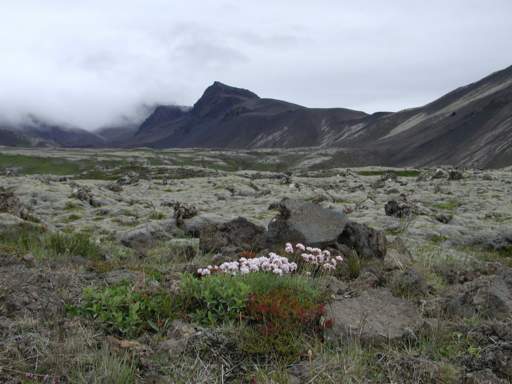
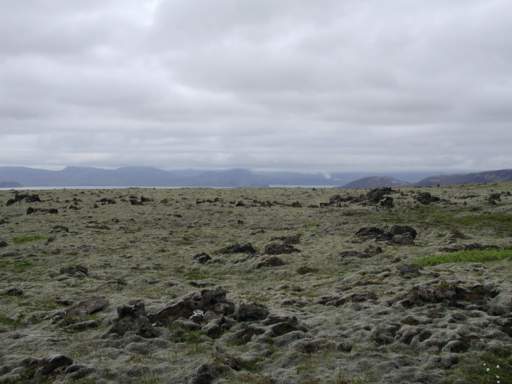
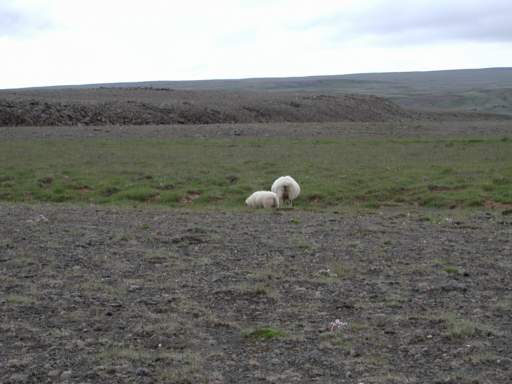
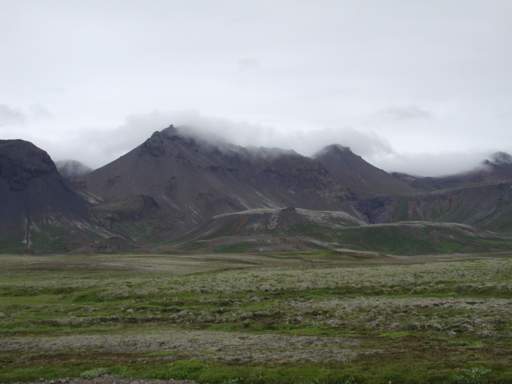
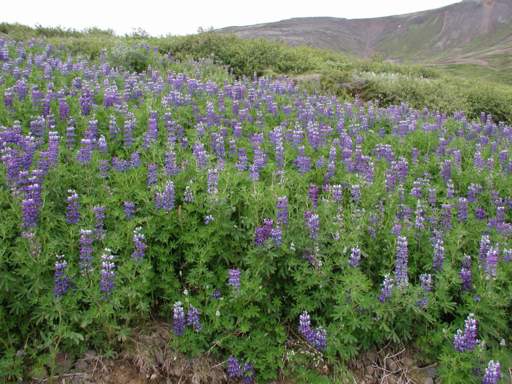
Beautiful Lupines are growing everywhere.
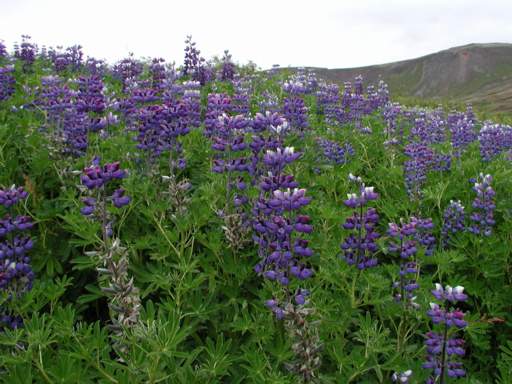
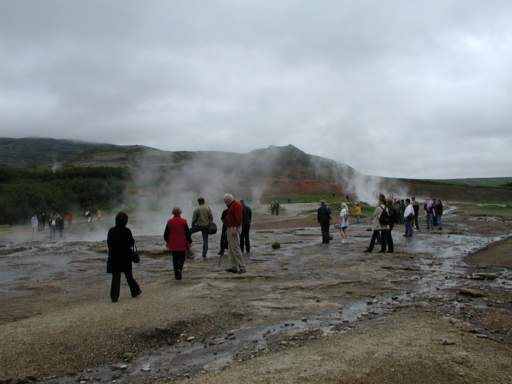
Geysir hot springs. There are many tourists.
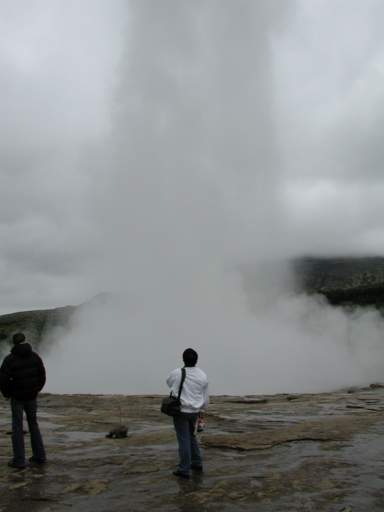
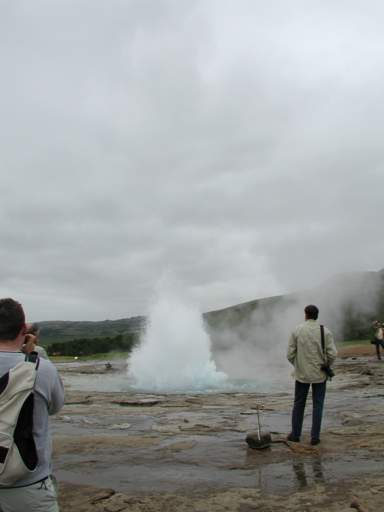
Strokkur ('the butter churn') blowing its top. The base bubbled before it blew and the water's bluish hues were visible. It erupted about every 10 minutes.
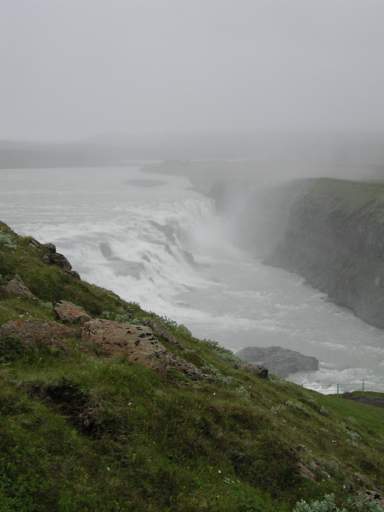

Gull Foss is located on Route 35 past Geysir just after the road switches from paved to gravel. We parked in the upper parking lot and walked down to the lower lot. We took the photos below from the end of the lower lot. Then we walked down to where you can see people standing in the photo above on the right. It was an incredible view and we got very wet from the dramatic spray, therefore taking few photos. A typical daily summer flow is 130 km^3/second while a maximum flow is 2000 km^3/second. If what we saw was typical then maximum would be awesome. The upper Gull Foss drop is 11 m and the lower drop is 21 meters. The canyon below it is 2.5 km long and 70 meters deep. Geologists think it may have been formed by a jokulhlaup (glacial outburst-often triggered by geothermal activity). Gull Foss formed where the lava followed a fissure in the lava and carved a passage.
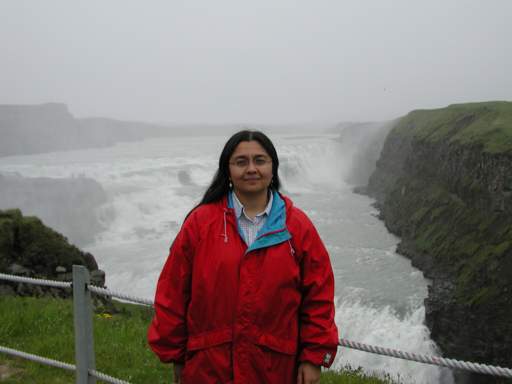
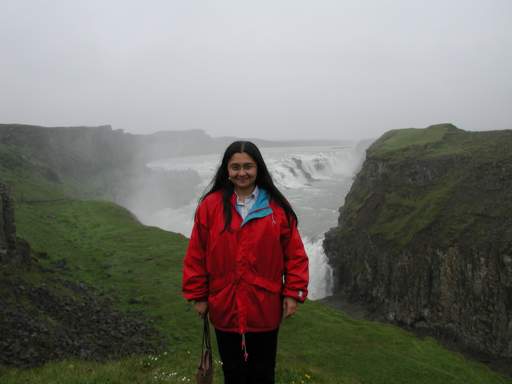
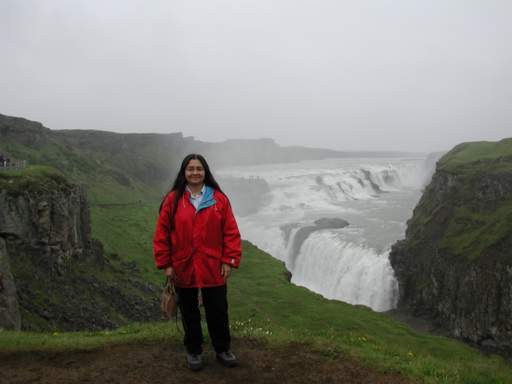
Uma at Gull Foss.

Gull Foss and the intense spray blowing up out of the canyon. The canyon below the falls is visible in the mist.
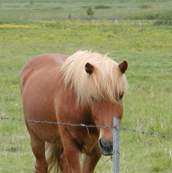
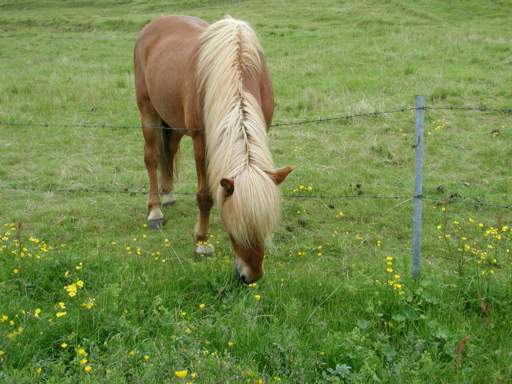
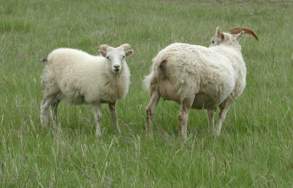
Icelandic Pony with blond mane. A pair of the many sheep we saw along the road on day 1!
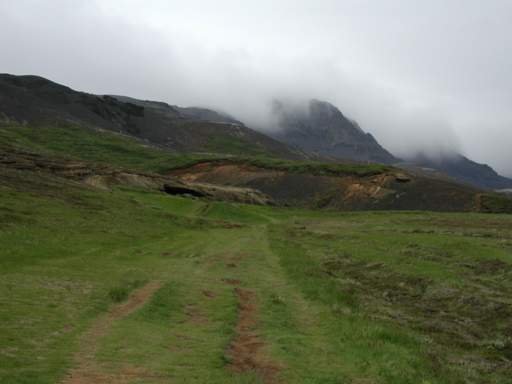
The famous lava tube. It looked like many generations of Icelanders had carved their names on the lava. Moss had grown over the names of the ansestors. This little side event was on Route 365 about half way between Thingvellir and Laugarvatn.
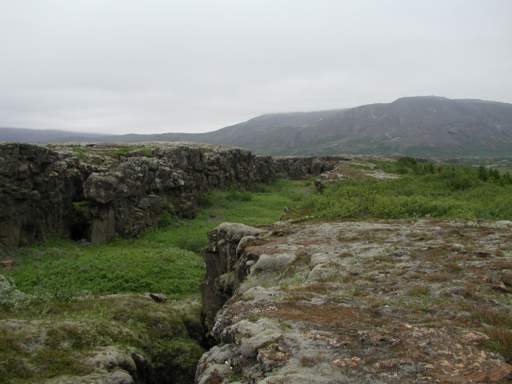
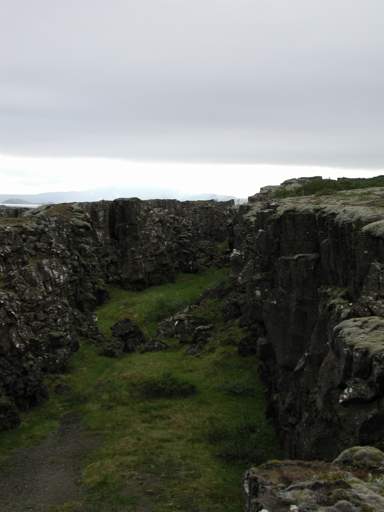
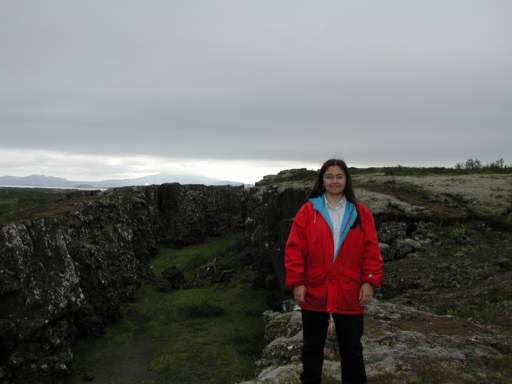
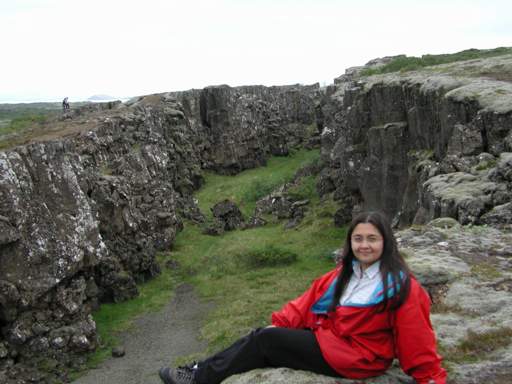
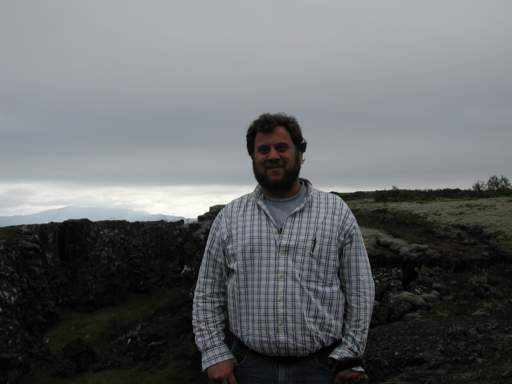
The mid-Atlantic rift which is the volcanically active region where the rift splits Iceland. This rift is in Thingvellir. These large fissures are clearly visible from the road (route 36) and there are numerous parallel rifts. This particular one was about 10 meters deep.

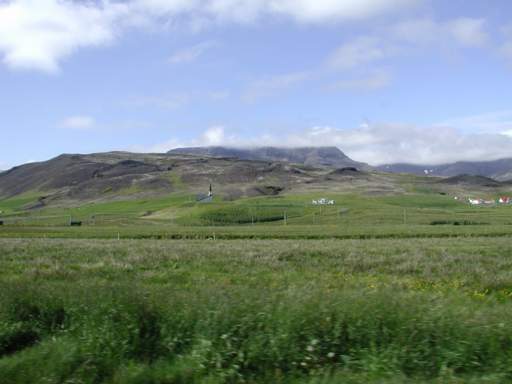
Beautiful countryside visible on the ride back to Reykjavik as the sky clears up.
This page was last changed on 11 July, 2002 .